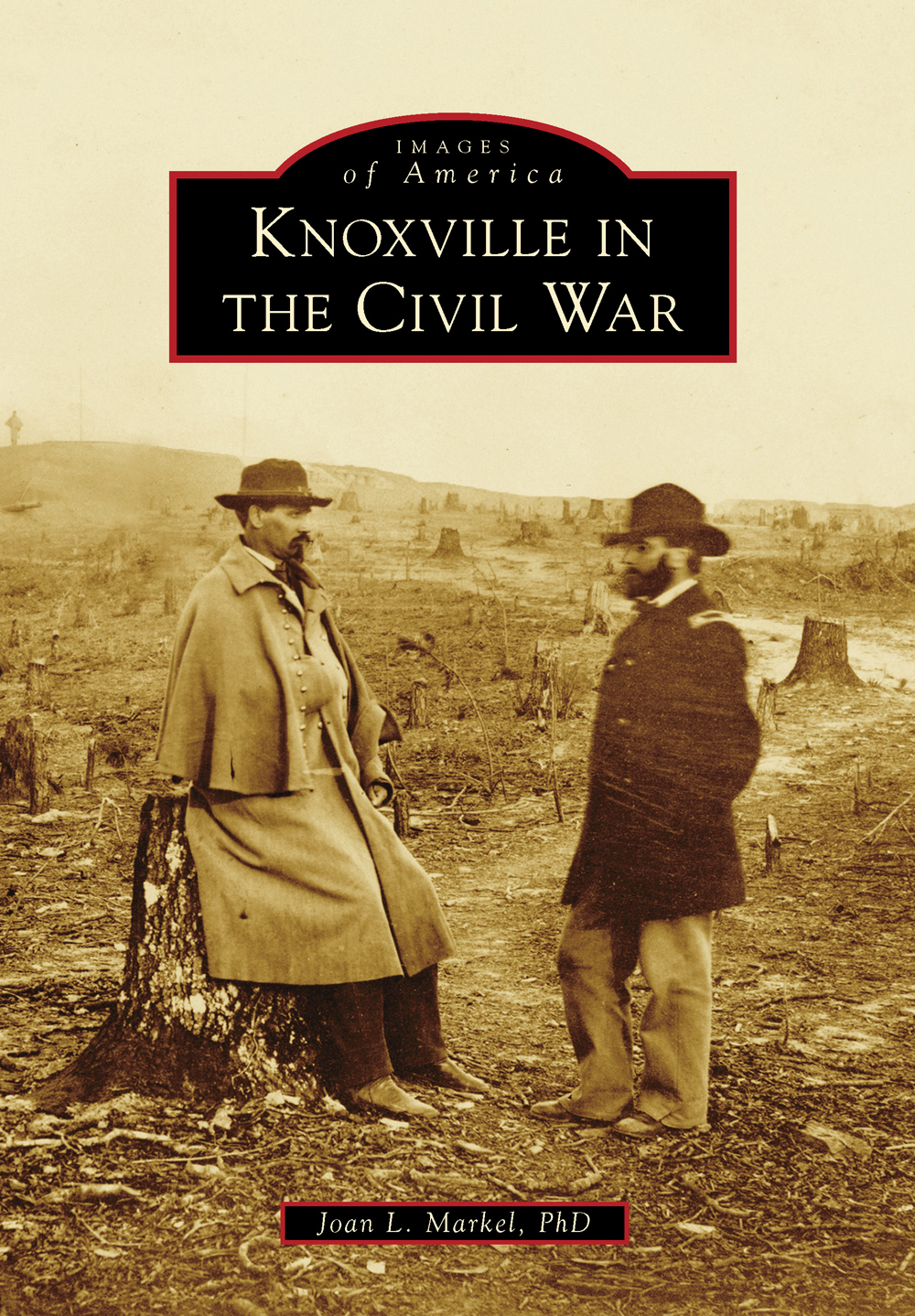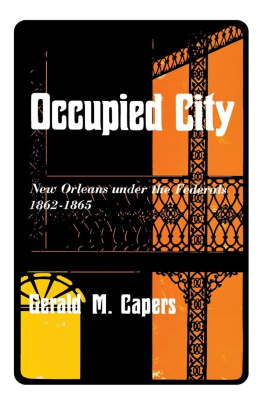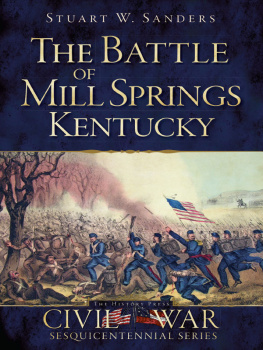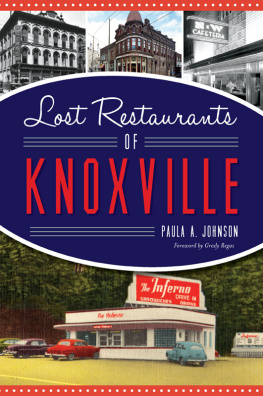Markel - Knoxville in the Civil War
Here you can read online Markel - Knoxville in the Civil War full text of the book (entire story) in english for free. Download pdf and epub, get meaning, cover and reviews about this ebook. City: Knoxville (Tenn.);Tennessee;United States;Knoxville, year: 2013;2014, publisher: Arcadia Publishing, genre: Romance novel. Description of the work, (preface) as well as reviews are available. Best literature library LitArk.com created for fans of good reading and offers a wide selection of genres:
Romance novel
Science fiction
Adventure
Detective
Science
History
Home and family
Prose
Art
Politics
Computer
Non-fiction
Religion
Business
Children
Humor
Choose a favorite category and find really read worthwhile books. Enjoy immersion in the world of imagination, feel the emotions of the characters or learn something new for yourself, make an fascinating discovery.

- Book:Knoxville in the Civil War
- Author:
- Publisher:Arcadia Publishing
- Genre:
- Year:2013;2014
- City:Knoxville (Tenn.);Tennessee;United States;Knoxville
- Rating:4 / 5
- Favourites:Add to favourites
- Your mark:
- 80
- 1
- 2
- 3
- 4
- 5
Knoxville in the Civil War: summary, description and annotation
We offer to read an annotation, description, summary or preface (depends on what the author of the book "Knoxville in the Civil War" wrote himself). If you haven't found the necessary information about the book — write in the comments, we will try to find it.
Markel: author's other books
Who wrote Knoxville in the Civil War? Find out the surname, the name of the author of the book and a list of all author's works by series.
Knoxville in the Civil War — read online for free the complete book (whole text) full work
Below is the text of the book, divided by pages. System saving the place of the last page read, allows you to conveniently read the book "Knoxville in the Civil War" online for free, without having to search again every time where you left off. Put a bookmark, and you can go to the page where you finished reading at any time.
Font size:
Interval:
Bookmark:

IMAGES
of America
KNOXVILLE IN
THE CIVIL WAR

GAY STREET, KNOXVILLE, APRIL 1861. As a vote on Tennessees future in the Union approached, US senator Andrew Johnson spoke openly against a pending secessionist convention. While he commanded the attention of a crowd in front of the Lamar House hotel, a Confederate regimental band marched down the street, disrupting the gathering. Violence was barely averted by the intervention of several pro-Confederate civilians. (Courtesy of Richard E. Williams.)
ON THE COVER: ORLANDO POE AND ORVILLE BABCOCK ON THE BATTLEFIELD AT FORT SANDERS. In March 1864, engineers Poe (left) and Babcock revisited the site of the disastrous Confederate assault made on November 29, 1863. The stumps used to construct an innovative telegraph wire entanglement are clearly visible. Army photographer George Barnard accompanied Captain Poe from Nashville through Chattanooga to document the Knoxville Campaign. (Library of Congress.)
IMAGES
of America
KNOXVILLE IN
THE CIVIL WAR
Joan L. Markel, PhD

Copyright 2013 by Joan L. Markel, PhD
ISBN 978-1-4671-1019-8
Ebook ISBN 9781439643808
Published by Arcadia Publishing
Charleston, South Carolina
Library of Congress Control Number: 2013930895
For all general information, please contact Arcadia Publishing:
Telephone 843-853-2070
Fax 843-853-0044
E-mail
For customer service and orders:
Toll-Free 1-888-313-2665
Visit us on the Internet at www.arcadiapublishing.com
To Evan and Andrea
CONTENTS
ACKNOWLEDGMENTS
Since coming to East Tennessee over 20 years ago, I have gained an appreciation for this unique place and its culture. Growing up in the Northeast, going to college in the Midwest, and residing in California for many years, I thought I was ready for my Southern experience. Living among the good people of East Tennessee, I have slowly learned subtle conventions that eluded me in the beginning. It has taken me some time to appreciate the fact that what is not said can be just as powerful as what is.
To the many east Tennesseans who have shared their family stories, you humanize the facts and dates of the history of this place. To all the folks from here and not from here, you create our present-day culture. Coming together to rediscover the past of this beautiful part of the world we all now call home contributes value to our community. The past continues in the present, even when it has been silenced. Thanks go to all of yall for your generous direct and indirect contributions to the production of this book. I am grateful for the following contributors: Jefferson Chapman, Steve and Nancy Dean, Jim and Lindsey McDonough, John Burkhart, Laura Powers, Bud Albers, Debbie Woodiel, Arlene Lynsky, Paul Tanguay, Tammie and Brian Burroughs, Jim Lyle, Bill Lawhon, George Lane, Earl and Pratibha Hess, Dennis Urban, Aaron Astor, Joe Spence, Gerald and Sandra Augustus, Mike Angst, Calvin Chappelle, Will Haslam, Susan Swan, Stephanie Drumheller-Horton, Eric Wayland, Lynne Sullivan, Mike Brown, Charles Reeves, Jim Tumblin, Larry Markel, Dot Kelly, Bob Young, Mark Kline, Maggie Johnson, Elizabeth Keller DeCorse, Bob Pennington, Lindsey Kromer, Alix Dempster, Jerry Cross, and Dewey Beard.
Special thanks to John Burkhart and Debbie Woodiel for their careful attention to detail.
| KEY TO FREQUENTLY SEEN COURTESY LINES | |
| AC | Authors collection |
| MHC | McClung Historical Collection, Knox County Library |
| MM | McClung Museum of Natural History and Culture, University of Tennessee |
| LC | Library of Congress |
| SPCL | University of Tennessee Libraries, Knoxville, Special Collections |
INTRODUCTION
Knoxville has always been the heart of the mountain and valley culture of upper East Tennessee. From its earliest settlement as a frontier outpost through its rise to a major manufacturing and distribution center, the development of this ever-changing American city has been influenced by and contributed to that larger national saga. By examining the ways in which historical trends were embraced, rejected, or sometimes ignored by this regionally distinct but fluid cross section of the American population, it is easier to understand some of those very complex events. Observing how events played out in this Switzerland of America and how the lives of individuals were forever altered during the Civil War can be illuminating.
Since its founding in 1792, geography has been a dominating factor in the development of Knoxville. The inland water system through the valleys provided transport in this mountainous region, functioning as the highways of these early times. As river trade increased in scale, water-transport ventures were tried, but navigation of the Tennessee River could only be counted on during the wet seasons; profitable enterprises could not be sustained. Politics in the mid-19th century focused on improving the transportation options connecting Knoxville to the markets all around, thus promoting the growth of its wealth and status. It was not until the completion of the railroad in 1858 that the vast potential of trade with the Northeast and the greater South could be capitalized upon. When the war began, local merchants were prospering, creating business relationships, particularly with markets in the South and West. In fact, this establishment of trading relationships with markets in the South helped determine the loyalties of many of Knoxvilles first families.
When the war began, the sons and grandsons of Knoxvilles founding fathers were the political and economic leaders of a growing and surprisingly transient population, and because of the nature of any small, original frontier population, most of the core of community leaders and their families were blood relations. Robert Tracy McKenzie, in his excellent 2006 study Lincolnites and Rebels, finds that in 1860 five percent of the population possessed 66 percent of the wealth, which meant the control of much of the economy was in the hands of a few descendants of the earliest arrivals. Those who had moved west in first half of the 19th century, often leaving families already established in other states, to find opportunities on the developing frontier also achieved success. About 10 percent of the citys population was African American; approximately, half were slaves in domestic service and the others free, with 28 percent of the free African American population owning property.
By 1860, many fine homes, impressive public buildings, and a growing economy defined the city of Knoxville. Progress and opportunity were real and thus threatened by the unsettled political situation at the national level. Local politicians were Whigs and Democrats, already fierce rivals, and the presidential election of 1860 was hotly debated in the city. Well-known local activists, such as Whig Parson William Brownlow and Democrat Dr. J.G.M. Ramsey, found themselves in opposition on almost every issue, including the overarching issue of secession. That animosity played out in the press and on the streets of Knoxville prior to and during the four years of war.
While the main cause of the Civil War was most certainly the institution of slavery, it did not play a major role as a justification for war in East Tennessee. Feeling no great affinity with the wealthy plantation owners of the Deep South, most East Tennessee Unionist leaders were nevertheless pro-slavery and held small numbers of slaves. They believed that the peculiar institution was best protected under the Constitution as written, and local politicians made multiple stump speeches in 1861 trying to explain this position to the rural population. Most people saw slavery as a natural institution strictly driven by social convention and not moral contemplation. In fact, many of the churches, ministers, and congregations were pro-slavery and supported the Confederacy. As a source of wealth, East Tennessee had little reason to own large worker groups, as the terrain and climate could not support profitable farms extensive enough to require slave labor. Despite earlier antislavery activities, this region, in the years immediately before the war, did not exhibit any significant abolitionist sentiment.
Next pageFont size:
Interval:
Bookmark:
Similar books «Knoxville in the Civil War»
Look at similar books to Knoxville in the Civil War. We have selected literature similar in name and meaning in the hope of providing readers with more options to find new, interesting, not yet read works.
Discussion, reviews of the book Knoxville in the Civil War and just readers' own opinions. Leave your comments, write what you think about the work, its meaning or the main characters. Specify what exactly you liked and what you didn't like, and why you think so.







